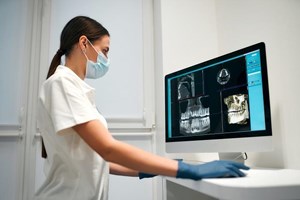Revised guidance on radiation protection published
Published: 14/10/2020
The Faculty of General Dental Practice (FGDP[UK]) and Public Health England (PHE) have published revised guidance on radiation protection in dental practice.
The second edition of Guidance Notes for Dental Practitioners on the Safe use of X-ray Equipment sets standards of good practice for the safe use of X-ray equipment in dental practice, and is endorsed by the College of General Dentistry (CGDent).
The guidance is freely available on the FGDP website, where hard copies are also available to purchase from the online shop, and FGDP members based in the UK will shortly be receiving a complimentary hard copy.
Presenting definitive, detailed and comprehensive recommendations in a logically ordered and intelligible format,Guidance Notes for Dental Practitioners on the Safe use of X-ray Equipment, 2nd Edition is designed as a reference for the whole primary care dental team.
The guidance covers both administrative and practical matters, taking into account developments in dental X-ray equipment, imaging technology and legislation since the first edition, which was published in 2001 by the National Radiological Protection Board (now part of PHE’s Centre for Radiation, Chemical and Environmental Hazards).
It was produced by a working party led by Public Health England and consisting of regulatory bodies, professional bodies representing dentistry and radiation protection, consultant dental radiologists and general dental practitioners.
The new publication includes:
Existing guidance on dental cone-beam CT (CBCT), hand-held dental X-ray equipment and digital imaging systems
Updated guidance on:
oRadiation controlled areas
oThe training of referrers, practitioners and operators with respect to dental CBCT
oAcceptance, commissioning and routine radiation safety tests for all dental X-ray equipment and the recommended intervals (extended to every three years for most dental CBCT equipment) between routine tests
oA simplified system for image quality rating and analysis
oA simplified approach to quality assurance of digital imaging systems and viewing screens
New guidance with respect to the requirements:
oFor dental practices to register with the HSE (or HSENI)
oTo investigate the circumstances when contingency plans are activated, and on the need to rehearse contingency plans
oTo monitor radiation levels at the boundaries of controlled areas
oTo assess doses to persons who need to enter controlled areas
oFor employers to co-operate when employees work with dental X-ray equipment on another employer’s premises, including arrangements for the formal handover of responsibility
oRegarding what should be expected of service engineers who undertake the installation, testing and servicing of dental X-ray equipment
oWhen disposing of or selling-on X-ray equipment
oFor record retention
Detailed practical guidance on how to achieve the optimisation of patient dose
Template documents, including a radiation risk assessment and the employer’s procedures relevant to dentistry
The guidance supports compliance with the Ionising Radiations Regulations 2017 (IRR17) and the Ionising Radiation (Medical Exposure) Regulations 2017 (IRMER17), but does not impose any requirements on employers beyond those required by legislation.
Ian Mills, Dean of FGDP(UK) and Trustee of the College of General Dentistry, said:
“The core function of the FGDP is to raise the standards of care delivered to patients through education of the dental profession and the provision of evidence-based guidance, and we have been delighted to work with Public Health England to publish a second edition of the Guidance Notes for Dental Practitioners on the Safe Use of X-ray Equipment. For almost two decades, this has been an important text in setting standards for the safe use of X-ray equipment in dental practices, and this updated edition will undoubtedly continue to be a key reference document for the whole primary care dental team.
“We are grateful to PHE and the many contributors who have spent considerable time and effort ensuring that it is informative, accessible and highly relevant, and are indebted in particular to Dr Keith Horner FFGDP(UK)(Hon.), whose analysis of the revised regulations three years ago was the catalyst for this project, and who has been involved throughout as the Faculty’s representative on the working group.”
Author: Julie Bissett













